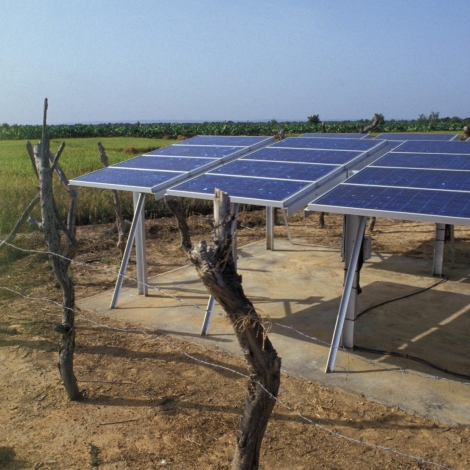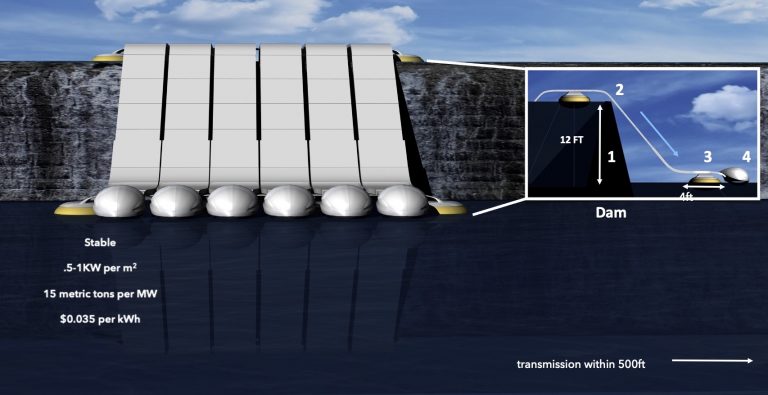If you asked people involved in renewable energy and development (engineers, academics, business people or civil society) what the important barriers to rolling out renewable energy projects were, you’d get a range of replies. It’s a reasonable guess, though, that none of them would mention scale. The most common usage in energy and development is positive, as in ‘scaling-up.’ That is the idea that there is a starting point ‘a’ and an end point ‘b’ for energy access. ‘A’ is the 1.2 billion people globally without access, and ‘b’ is where those people should have it. Understanding that ‘scaling-up’ is not just a neutral, objective descriptor in the process of getting from ‘a’ to ‘b,’ however, is critical to the success of energy interventions.
When renewable energy is deployed to increase energy access, the perceptual tension between imaginings of scale and actual practice can increase dramatically.
Scale, like energy itself, is a ‘factish,’ a word that the sociologist of science Bruno Latour coined to represent something that can be observed objectively but which is also a social construct. We use scale not just to measure things, but to locate ourselves and those things in our world within the structures of our understanding. When renewable energy is being deployed to increase energy access and move societies into low carbon transitions, moreover, the perceptual tensions between imaginings of scale and the way that the concept translates into practice can increase dramatically.
Take the Solar Home System (SHS). Following the appearance of the first solar-powered residences in the early 1970s, by 1980 the idea that the household was the scale at which resources should be directed to roll out solar energy as a tool for development rapidly became mainstream, driven substantially by European experimentation with SHS. By 2000, two decades after SHS had made the leap to becoming a conceptual key to rural electrification, research had already identified many ‘organization, technical and financial problems.’ Nonetheless, substantial donor interest accompanied by decreasing costs increased the roll-out of SHS, culminating in the biggest program of all in Bangladesh, where since 2002, 3.8 million SHS have been disseminated.
The scale at which renewable energy is being deployed has been driven since the 1980s not by objective analysis, but by a range of social constructs.
But, the effectiveness of the SHS remains controversial for all the funding devoted to it. Whereas a range of evidence shows that the provision of illumination leads to enhanced quality of life, claims made for SHS as a provider of economic improvement are at least questionable. So how did the household system become the scale at which so much effort and funding has been devoted to this particular renewable energy intervention?
In a forthcoming article, colleagues and I wrote that:
“Potential solutions to global energy poverty are being reverse-engineered through the lens of supposedly sustainable technologies, financial models, multilevel policies and scalability in technology rather than attending to the particular (current and future) energy needs and aspirations of the communities in question.”
“The energy problems experienced in Sub-Saharan Africa today can only be solved by the decentralization of energy generation to the smallest subset possible,” – Eugene Ikejemba and colleagues
In other words, the scale at which renewable energy is being deployed has been driven since the 1980s not by objective analysis, but by a range of social constructs tending to leave out the most important one of all, the social environment of the beneficiaries themselves. These constructs included technological, policy, donor, financial and economic biases based on pre-imagined understandings of the role of those components.
More recently however a range of different organizations and individuals have begun to research the scalar and social aspects of energy provision, working from the starting point that the efficiencies to be gained from decentralized energy provision in terms of the enhancement of quality of life do not stem automatically from the mere provision of energy.
This means working to a social scale. It means accepting that, as with the case of Sub-Saharan Africa, “The energy problems experienced in Sub-Saharan Africa today can only be solved by the decentralization of energy generation to the smallest subset possible,” as Eugene Ikejemba and colleagues at the University of Twente in Enschede, The Netherlands, wrote in Renewable Energy.
Systems that are merely renewable sources overlain on old systemic visions stand a real chance of becoming truly alternative energy systems.
Organizations such as the transnational NGO GVEP (now Energy4Impact) and The Energy and Resource Institute (TERI) in Delhi, India, have been working on community-based energy initiatives focused on poverty alleviation for some time now, excellently depicted in the TERI video below, ‘Empowered: Augmenting Livelihood through Renewable Energy.’
The social energy systems approach that is being developed now implies not only challenging biases and pre-imagined understandings of what energy is for and how it should be provided, but viewing renewable energy education as a two-way process, rather than the current top-down, technocratic approaches. In this way systems that are merely renewable sources overlain on old systemic visions stand a real chance of becoming truly alternative energy systems.
Further Reading
Chukwuma, L., Klintenberg, P., Wallin, F. and Karlsson, B. (2015) Illuminated but not electrified: An assessment of the impact of Solar Home System on rural households in South Africa, Applied Energy, Volume 155: 354-364.
Cloke,J., Mohr, A. and Brown, E. The Solar Imaginary: Towards a Social Energy Systems Approach to Community Renewable Energy Projects in the Global South, Research & Social Science, submitted.
Halder, P. (2016) Potential and economic feasibility of solar home systems implementation in Bangladesh. Renewable and Sustainable Energy Reviews 65: 568 – 576.
Latour, Bruno (2011) On the Modern Cult of the Factish Gods, Durham, NC: Duke University Press.
Nieuwenhout, F., van Dijk, A., Lasschuit, P., van Roekel, G., van Dijk, V., Hirsch, D., Arriaza, H., Hankins, M., Sharma, B. and Wade, H. (2001) Experience with Solar Home Systems in Developing Countries: A Review, Progress In Photovoltaics: Research And Applications, Prog. Photovolt: Res. Appl. 2001; 9:455-474.
Tom Roberts and Bronislaw Szerszynski (2011) Metaphors and frames of energy, Conference paper presented at the CFOED Network, Workshop 3 ‘Normalising Catastrophe’, Bath University, 16 -17 June 2011.

